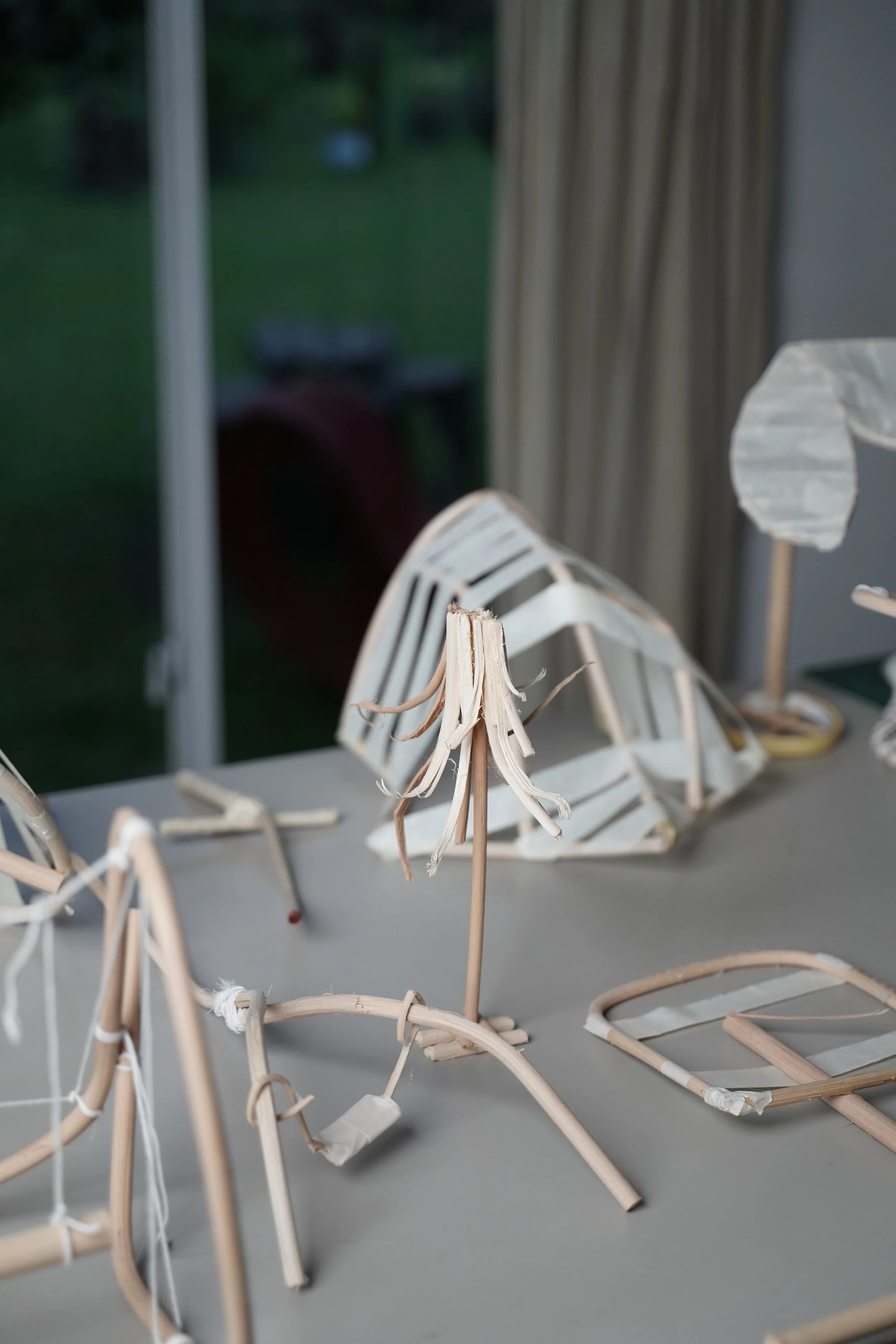Things You Should Know Before Hiring Designers
When you’re running a business, at one point in your journey, you’ll come upon the moment you feel your business needs some design touches. That moment may come in the form of thoughts like, “I need a good-looking business card,” “people need to be able to recognize our product easily in the market,” or “man, my brochure is hard to read and understand!”
It’s a moment of realization that, however, you’ve tried to deflect the need for design all this time, it’s one of the critical aspects to connect better with your audience and distribute your value.
Now you have begun to look for designers or design companies that will be able to fulfill your needs. How do you know, out of a hundred thousand designers or creatives in Indonesia, which one will be able to help you?
First of all, cover the basics.
THE BASICS
From Shape of Thoughts Studio Activity : Workshop - Material Exploration
What are the basics? First, you’d need to reflect on your needs, measure your business's value, and determine where you want to go with the design investment.
Let’s imagine a case where you need to remake the logo of your business that you’ve run for five years and is valued at 5 billion rupiahs. You have a plan to grab a more significant chunk of the market and grow your business to 10 billion rupiahs in 5 years ahead. This will instantly help you filter which designers or companies can reflect your value to that level.
Some designers will do the remake of your logo for 4 million rupiahs, 8 million, and 100 million, or even more. The question is, will you trust the opportunity of 10 billion rupiahs to a rebranding worth 4 million? Or will you invest in a rebranding worth 1 billion rupiahs, equating to 20% of your company’s current values?
If you divide that investment into five years runways of your business, one will equate to 800 thousand rupiahs and the other 200 million rupiahs per year. Both don’t seem to make sense, right? Let’s dive into the next step.
KNOW WHAT YOU WILL GAIN
Most people are often so foolishly hard-headed when it comes to expenses when it’s often true that you’ll get what you pay for. It’s impossible to get experienced designers who will do a 4 million rebranding for you and inexperienced designers who will charge you 1 billion rupiahs. Behind that pricing, there are experience (and portfolio) and services that come into account.
When you are paying for 1 billion rupiah rebranding, you'd most likely get more than just a logo. A logo is only a tiny part of the whole rebranding. You'll get an ecosystem of brand and communication efforts that may include:
Strategy
Applications of the logo to all touchpoints
Guided narratives of your brand
Communication effort to your company values
A dedicated team
When you compare that 1 billion investment to hiring an in-house team, you’ll probably get four brand and marketing people for which you have to pay more than 500 million per year plus manage on your own.
Let’s view this from the opportunity for the audience. In advertising, you can usually try to calculate the value of your ad placement to how many eyes will see the advertisement. If a newspaper has a 100,000 readership, and the ad placement costs 100 million rupiahs per day, then the cost of your ad is 1,000 per view.
The same thing can be applied to branding. How many eyes will see your logo and brand? How many values will they give back? Singapore airlines carried 3.39 million passengers in 2021-2022 alone, and if they paid a rebranding worth 1 billion and lasted five years, it would only cost 58 rupiahs per view of the logo. Now the 1 billion brandings seem to make more sense, don’t you think?
From Shape Of Thoughts Project Documentation : Commongrounds Coffee at Ashta District
THE PERCEIVED VALUE OF YOUR DESIGN PARTNER
When you’re investing money—especially a massive chunk of money—to other companies, you’re actually paying for a partnership. Because who you hire or partner with will bring their market-perceived values to your company. When the partner is known for its innovative approach, your own company will also be leveraged in that position.
You need to ask how you want to be valued in the future and find designers or companies that will become your partner in that position. Shape of Thoughts is valued for its witty, intelligent, strategic, unordinary approach, with local touches for every brief we received. That’s a value you can also expect applied to you if we meet as a partner.
THE PROCESS YOU’LL TAKE PART
As partners, you and the designers must invest energy and time to make things happen. You’d need a clear view of the journey your design partner will guide you through. Meanwhile, you’d need to express your constraints and expectations clearly so both sides can make the necessary adjustments.
This is essential communication in partnership. But often, both sides fail to do this for several reasons:
Incompetencies as a client and service provider
Lack of commitment from both parties
Lack of respect for each other’s values
This should be detected and overcome as quickly as possible, even before the work period commences. Because partnerships, even paid ones, will affect you beyond that period.
THE POST-SERVICES AND RIGHTS
A partnership, especially the paid ones, will affect your company or at least the work done long after it was finished. One of it is because the track record of each parties as a company will be connected. It’s essential to acknowledge and plan from the beginning how the work is credited and used. This will protect each parties to unwanted exposure or pressure.
The field of design has considerably the most extensive gray area regarding credits and rights. Besides the lack of knowledge of intellectual property rights, it’s due to the subjective nature of design appreciation. For example, in a social media content creation project, a content agency or studio may not want to give the raw design files after the project has finished. In the agency's eyes, if they provide the files to the client they risk their opportunity for contract renewal, and they can’t protect the licensed assets they use in the design. Yet many companies that take a role as the client feel they have the right to all the design materials with the investment they’ve committed. Many client-vendor relationships left off on a less positive note due to this.
To prevent disputes in the post-service period, both parties must acquire the latest knowledge and information on ethics to understand where the expectations are coming from.
Now, if you’ve considered the 5 points above, are you ready to choose your design partner?



